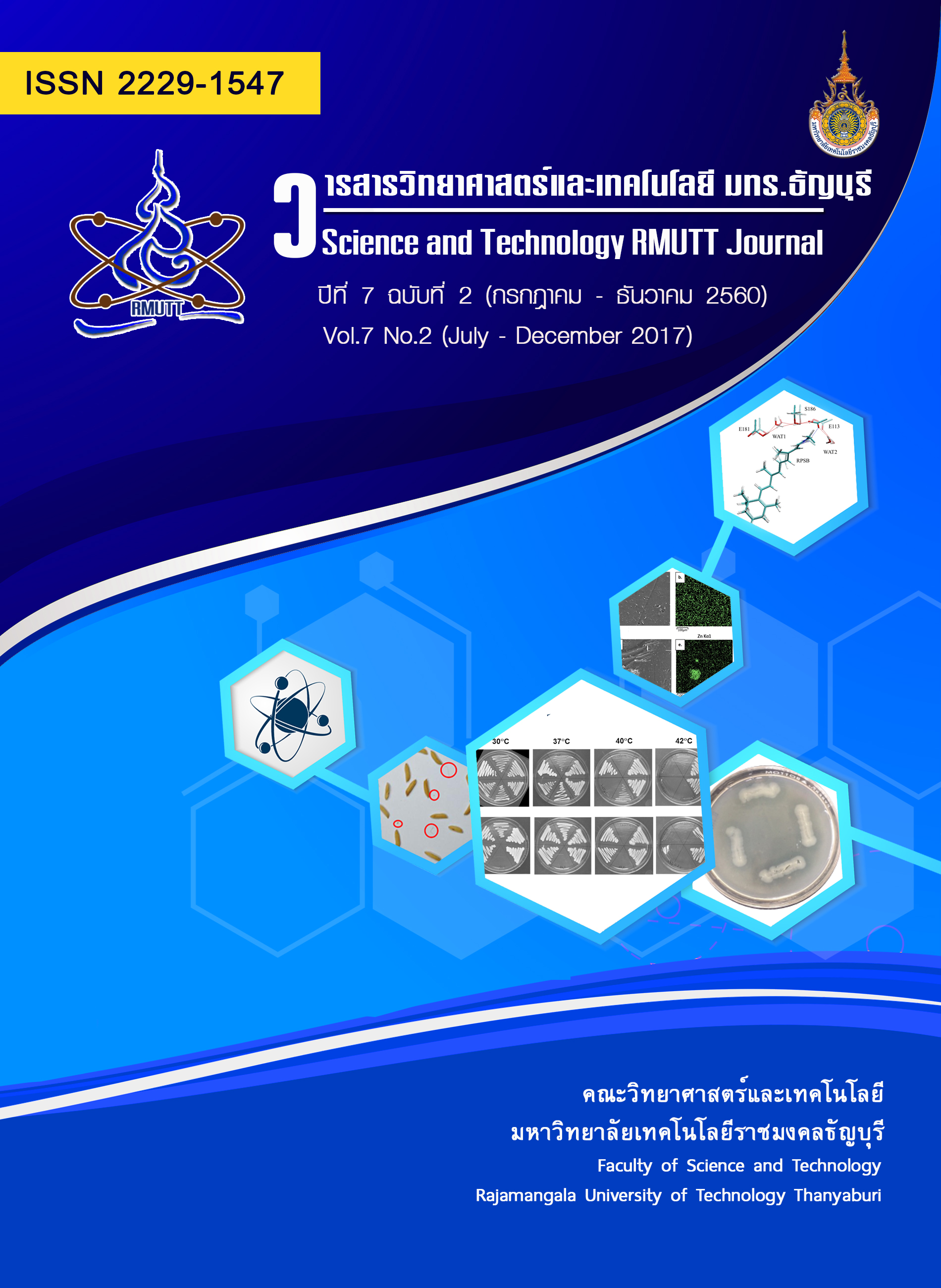The Prevalence of Antibiotics Drug Resistant in Surgery Unit of Banglamung Hospital, 2015
Main Article Content
Abstract
Nosocomial infection is an important problem that occurs with patients who were admitted in the hospital. It can be found in all levels of hospitals. The prevalence varies from place to place and the numbers of cases increase every year. This infection leads to increased severity of the disease and prolong of hospitalization. The most common sites that nosocomial infection can be found are urinary tract, surgical site, respiratory tract and bloodstream. Objective: The study aimed to determine the prevalence of resistant bacteria found in the male surgery ward, Banglamung Hospital and compared the costs of maintaining the period of bacteria resistant. The number of 28 samples was found resistant bacteria from October 2014 to September 2015 and analysis by using percentage, chisquare crosstab.
The results showed that there were 28 patients who were resistant bacteria 37 times (9.61%) average age of 48.46 years. Total cost of treatment 1,496,878 baht, the highest was 49,923 Baht. Total day bed 782 days (2 years, 1 month, 22 days). Most commonly obtained from wound-pus / discharge 83.78% (31 times), E.coli were the most commonly 51.35% (19 times) the prevalence of resistant bacteria 4.93 % and Staph aureus (MRSA) 5.40% (2 times) accounted for 0.52% of prevalence in unit. The resistant bacteria 53.57% after stay in hospital more 7 days and found 39.28% in less 3 day group. The susceptibility showed that Imipenem 78.38% and resistant to Ceftazidime 67.57%. The correlation found the group of patient who stayed in more 7 days were significant statistical level at .05 in more 10,001 baht of treatment = 13.997, = 6, = .03), with length of stay> 22 days = 10.175, = 4, = .038) . In specimen collection less than 3 days = 12.907, = 4, = .012) had highly correlation more 7 day group which length of stay and cost of treatment significant at .05 = 9.972, = 4, = .041) . The results were found to be useful in the planning of resistance management solutions. And guidance systems for use of antimicrobial surgical patients. Banglamung Hospital And uses a database to monitor the system in the neighborhood - Transfer between hospitals in neighboring areas.
Article Details
References
Ramasoot T. Nosocomial infection control. J Med Assoc Thai 1995;78 Suppl 1:S57-8.
Juntaradee M, Yimyaem S, Soparat P, et al. Nosocomial infection control in district hospitals in Northern Thailand. J Med Assoc Thai 2005;88 Suppl 10:S120-3.
นิตยา อินทราวัฒนา และมุทิตา วนาภรณ์. โรคติดเชื้อในโรงพยาบาลและสถานการณ์การดื้อยา. Journal of Medicine and Health Sciences(Vol.22 No.1 April 2015) 81-92.
Centers for Disease Control and Prevention. Public health focus: surveillance, prevention and control of nosocomial infection. MMWR 1992;41:783-7.
ภาณุมาศ ภูมาศ, วิษณุ ธรรมลิขิตกุล, ภูษิต ประคองสาย, ตวงรัตน์ โพธะ, อาทร ริ้วไพบูลย์, สุพล ลิมวัฒนานนท์. ผล กระทบด้านสุขภาพและเศรษฐศาสตร์จากการติดเชื้อดื้อยาต้านจุลชีพในประเทศไทย : การศึกษาเบื้องต้น. วารสาร วิจัยระบบสาธารณสุข 2555;6,3(ก.ค.-ก.ย.):352-360.
วีรวรรณ ลุวีระ. การดื้อยาปฏิชีวนะของแบคทีเรีย. สงขลานครินทร์เวชสาร 2549; 24(5):453-9.
Taslima Y. Prevalence of ESBL among Escherichia. coli and Klebsiella spp. in a tertiary care hospital and molecular detection of important ESBL producing genes by multiplex PCR. [serial online] 2012 Jul [cited 2012 Jul 1]; Available from: URL: http://www.mmc.gov. bd/ downloadable%20file/Prevalence%20of%20ESBL%20by%20Dr.%20Taslima%20Yasmin.pdf
Segatore B, Setacci D, Perilli M. Antimicrobial susceptibility of clinical isolates of Enterobacteriaceae producing complex β-lactamase patterns including extended-spectrum enzumes. Int J Antimicrob Agents 2004;23:480-6.
Knothe H, Shah P, Kremery V, Antal M, Mitsuhashi S. Transferable resistance to cefotaxime, cefoxitin, cefamandole and cefuroxime in clinical isolates of Klebsiella pneumonia and Serratia marcescens. Infection. 1983; 11(6):315-7.
Yoo JS, Byeon J, Yang J, Yoo JI, Chung GT, Lee YS. High prevalences and plasmid-mediated AmpC beta-lactamases in Enterobacteriaceae isolated from long term care facilities in Korea. Diagn Microbiol Infect Dis 2010;67(3):261-5.
ไพโรจน์ เสาน่วม. ระบาดวิทยาของโรคติดเชื้อในโรงพยาบาลในผู้ใหญ่ที่เกิดจากเชื้อ ESCHERICHIA COLI หรือ KLEBSIELLA PNEUMONIAE ที่ผลิต EXTENDED-SPECTRUM β-LACTAMASES (ESBL) ในโรงพยาบาลศูนย์และโรงพยาบาลทั่วไปในประเทศไทย. [serial online]. 2551 [สืบค้นเมื่อ 1 กรกฎาคม 2555]; แหล่งข้อมูล: URL: http://dcms.thailis.or.th/tdc//browse.php? option=show&browse_type=title&titleid= 117412&query=%A1%D3%B8%C3&s_mode=any&d_field=&d_start=0000-00-00&d_end=2555-05-23&limit_lang= &limited_lang_code=&order=&order_by =&order_type=&result_id = 119 & maxid =254.
เดชพิภัทร์ อมรทิพย์วงศ์ และคณะ. ความชุกของเชื้อ K. pneumoniae และ E. coli ชนิดสร้างเอนไซม์ extended spectrum β-lactamase ที่แยกได้จากผู้ป่วยที่เข้ารับการรักษาที่โรงพยาบาลน่าน และโรงพยาบาลชุมชนในจังหวัดน่าน ระหว่าง ปี พ.ศ. 2547-2553. วารสารเทคนิคการแพทย์เชียงใหม่ปีที่ 44 ฉบับที่ 3 กันยายน 2554 : 169-176.
ชัยพร การะเกต. ความชุกของเชื้อ K. pneumoniae และ E. coli ชนิดสร้างเอนไซม์ extended spectrum β-lactamase ที่โรงพยาบาลเชียงคำ ระหว่างปี พ.ศ. 2554-2555. วารสารโรงพยาบาลพิจิตร ปีที่ 28 ฉบับที่ 1 ตุลาคม 2555 – มีนาคม 2556.
Chaikittisuk N, Munsrichoom A. extended-spectrum b-lactamase-producing Escherichia coli and Klebsiella pneumoniae in Children at Queen Sirikit National Institute of child health. J Infect Dis Antimicrob Agents 2007; 24: 107-15.


